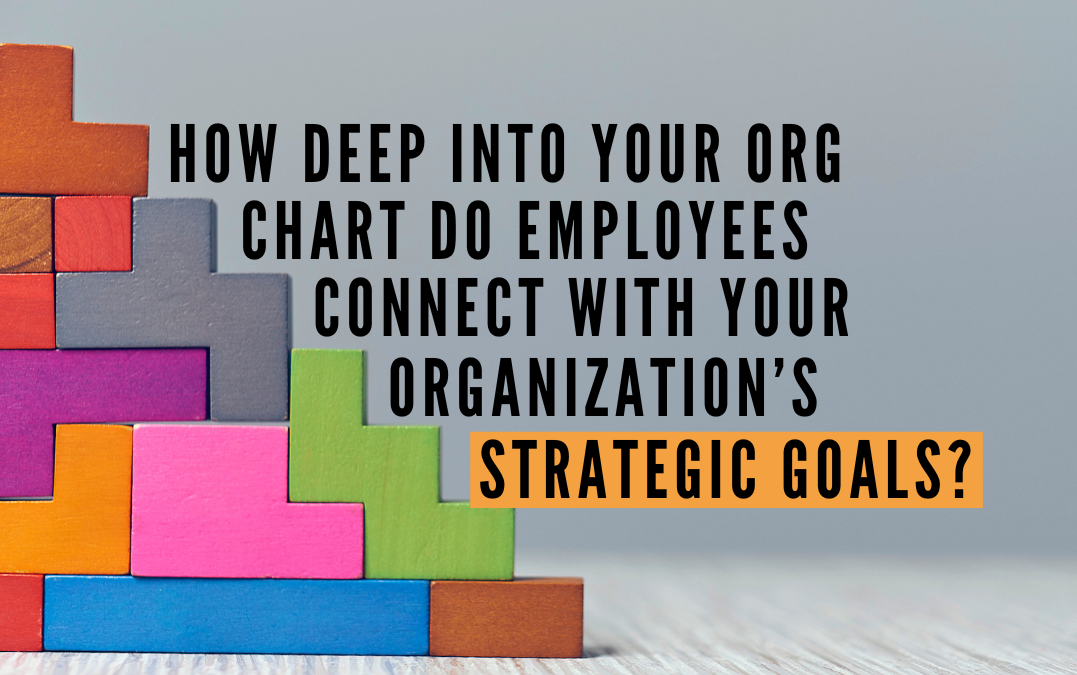
Strategic Plan, Strategy Execution
By: Sheri Nasim, President & CEO
This year, I had the opportunity to work with two major clients to help them refresh their strategic goals. One organization chose the old school method of having business unit and operational leaders gather in person at a multi-day retreat to share their first pass plans with one another, then refine those plans over the next two months and lock in their goals for the next fiscal year along with OPEX and CAPEX budgets. The other organization (which, ironically, is a department of an Ivy League school) chose to refresh their strategic plans iteratively over a five-month period. They wanted to involve more stakeholders in the planning process, which would ideally result in shared accountability for delivering on the goals.
There are benefits and drawbacks to both strategic planning methods that my clients chose. But both were wise enough to skip drafting and editing 30+ page strategic plans. Instead, both walked away with a set of actionable, measurable goals that could be cascaded to the individual contributor level. As authors Kenneth Carrig and Scott Snell state in Strategic Execution (Stanford Press, 2019), three out of every five companies rate their organization as weak on strategy execution.

As I’ve written in multiple posts over the years like – 3 Proven Ways to Move from Strategic Planning to Strategy Execution – the sooner you can connect your strategic objectives with the goals and rewards of individual team members, the better chance you have of turning that theory into reality. Strategy execution happens with true goal alignment from top to bottom, regular monitoring of progress, and linking individual incentives with organizational performance.
I’m fortunate to work with leaders who understand that the days of the written strategic plan are past. Whether you choose the multi-day, retreat style method or the multi-month stakeholder model of refreshing your strategic goals, you’ll be far more likely to achieve those goals when you help your team members connect their goals to the big picture.
Question: What ways have you found to bridge the gap between strategic planning and strategy execution?

Diversity, Equity, Inclusion, Strategic Plan
On October 27th, we hosted our final 2021 quarterly webinar dedicated to the subject of diversity, equity, and inclusion (DEI). If you’ve joined our previous DEI webinars, you’ve seen Arthur Benjamin, Sr. Director Diversity, Equity and Inclusion at Tinuiti, take on the role as moderator for a panel of experts in the field. For this webinar, we asked Arthur to deep dive into the subject by interviewing Martina Winston, VP and Senior HR Partner Diversity & Inclusion Leader with Protective Life.
Specifically, Martina came prepared to share her experience with developing and honing Protective Life’s D&I Strategic Roadmap. Here are the top five takeaways from the webinar:
1. Don’t try to keep up with the D&I Joneses. You’re DEI journey must begin by starting with an honest assessment of your organizational readiness. Don’t try to do what everybody else is doing or rush to win awards. Instead, hold one-on-one conversations with executive leaders and key stakeholders about where you are and where you aspire to go.
2. Let the numbers tell the story. Review the demographic data of your employee population to help you determine where to start your DEI journey. At Protective Life, for example, Martina and her team found that improving both gender and racial diversity and inclusion in the areas of recruitment, development, and retention were key areas to focus on and help the organization mature.
3. Not all consultants are created equal. Just as you need to assess the reality of your starting point, finding a partner and tools that meet you where you are and what you need at key legs in your journey is critical. “You’ve got to constantly check where you are,” Martina said. Stay true to your progress, and don’t take it personally if you haven’t achieved 100% of your goals at the outset.
4. ERG’s: We. Are. Not. Ready. When you agree to step into the diversity and inclusion role, be prepared to field a well-intentioned, continuous flow of ideas from your colleagues. This includes starting employee resource groups, or ERGs. “I should have gotten a t-shirt that read, “We Are Not Ready,” said Martina. “If we had started ERGs 3 ½-years ago, they would have failed. We simply were not ready. But I’m happy to share that in 2022 – 4 years into our journey – we’ll be starting our version of ERGs called Growth Network Groups where our employees can learn, grow, and connect.”
5. Share the load. Martina shared samples of Protective Life’s Strategic DEI Roadmap for 2019 and 2021 to show how the work developed and matured. A key takeaway was that no single person could be responsible for developing the roadmap or doing the work. She worked with a diverse group of stakeholders from across the organization to determine what initiatives to include and who should own the work. The 2021 version also designated the Support needed by each Owner to deliver the work.
If you are a student or practitioner in the DEI space, you’ll know that it is filled with amazing, transparent, generous, passionate people like Arthur Benjamin and Martina Winston. We are incredibly honored to share our platform to continue to take part in the conversation and growth of this community. Watch this space for what we’re teeing up for 2022!
Watch the replay from this lively discussion.
Question: What traction did your organization gain with its DEI strategy this year, and what’s on your 2022 roadmap?
Driven by the premise that excellence is the result of aligning people, purpose and performance, Center for Executive Excellence facilitates training in leading self, leading teams and leading organizations. To learn more, subscribe to receive CEE News!



